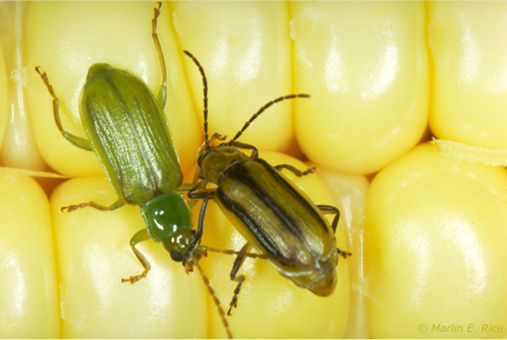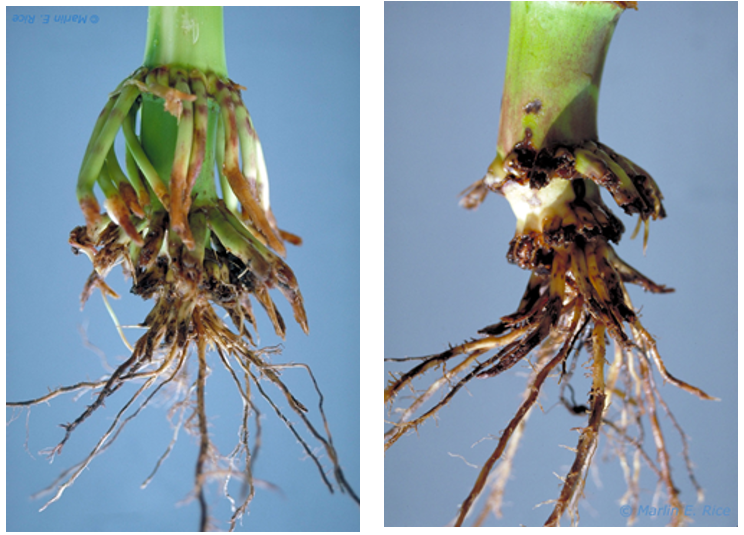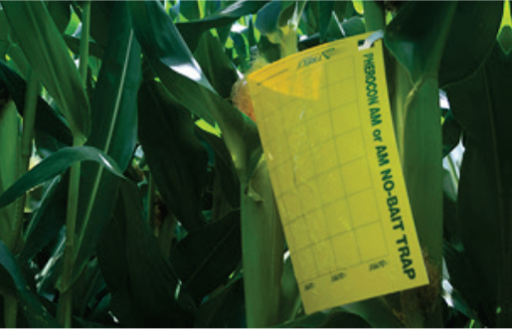- If traps average <20 beetles per week:
- Low/Moderate CRW populations are anticipated next year.
- Select a control option for each field:
- Rotate acres to another crop.
- Plant a corn rootworm Bt corn product. (If a Bt-rootworm product has already been planted 3 years in a row or you are in a geography where CRW Bt resistance is already confirmed/suspected, rotate out of corn.)
- If traps average >20 beetles per week:
- High rootworm populations are anticipated next year
- Select a control option for high populations:
- Rotate acres to another crop.
- If corn must be grown, apply foliar insecticide in the current year to control beetles prior to egg-laying. If CRW Bt resistance is suspected in your geography, consider using a non CRW Bt product with application of in furrow insecticide.
- To maintain efficacy of Bt corn rootworm products, it is essential to develop a rootworm management plan that:
- Breaks the cycle
- Manages populations
- Protects the Bt trait
Please contact your Pioneer Sales Professional or local Extension professionals to assist you in developing field-specific best management practices for your operation.



